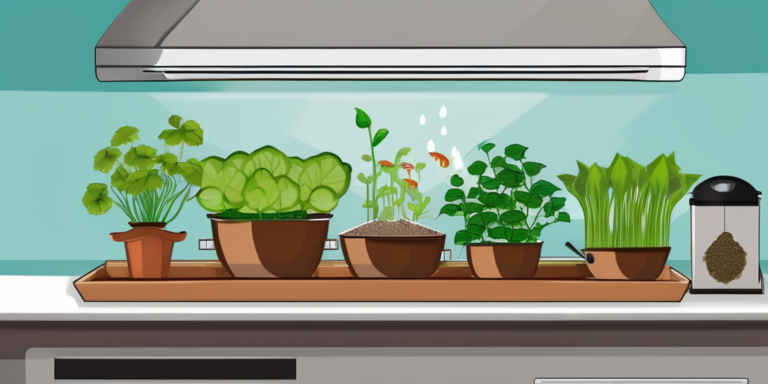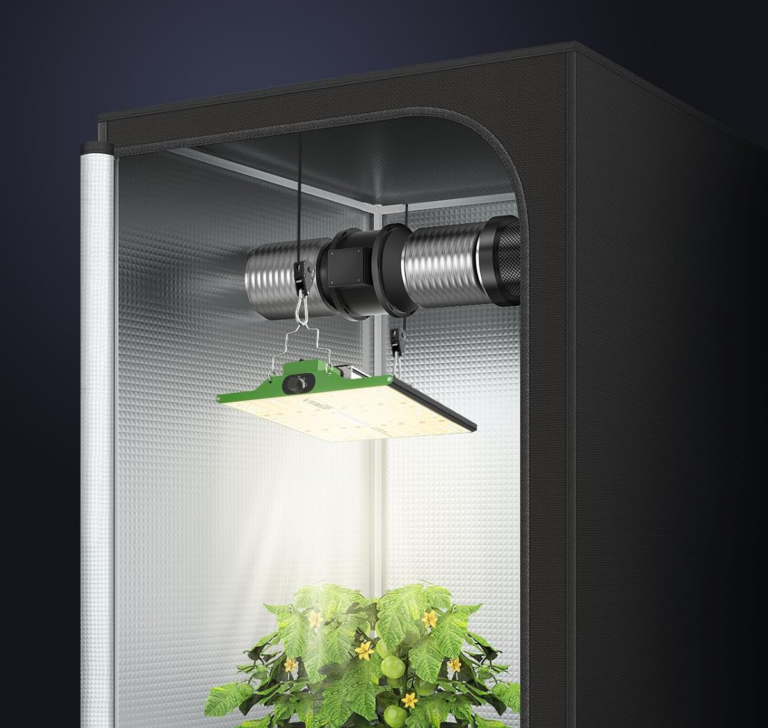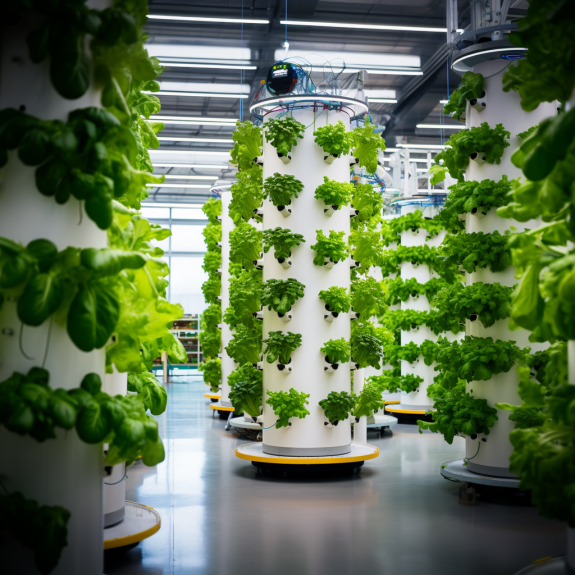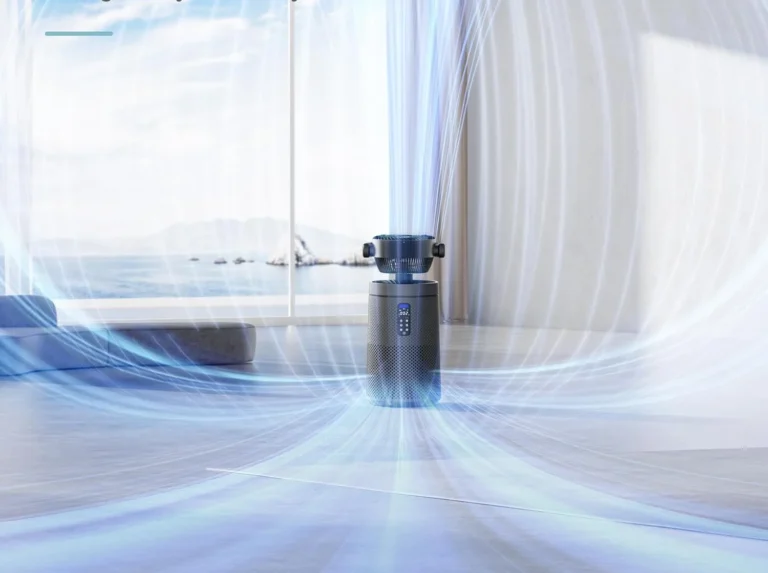In the ever-evolving world of indoor gardening, one crucial element stands out as the linchpin of success: lighting. Whether you’re nurturing a jungle of houseplants, cultivating a flourishing indoor garden, or aiming for rapid growth in your hydroponic setup, the right lighting system can make all the difference. Welcome to the future of gardening with our Smart Grow Systems, where we harness the power of automated lighting to create the perfect environment for your plants to thrive.
Shedding Light on Grow Lights for Plants
The Role of Light in Indoor Plant Growth
Indoor plants have unique requirements, especially when it comes to lighting. Unlike their outdoor counterparts, indoor plants often receive less natural sunlight, making it imperative to have supplemental light to supplement their light needs. This is where grow lights come into play. These specialized light fixtures emit light that caters to the specific needs of plants, ensuring they receive an adequate amount of light energy for photosynthesis and growth.
Understanding the Light Spectrum
One of the keys to successful indoor gardening is understanding the light spectrum and how it affects plant growth. Different wavelengths of light play distinct roles in plant development. Blue light, for instance, is crucial for vegetative growth, while red light is essential for flowering and fruiting. Smart Grow Systems incorporate a carefully balanced combination of blue and red light to optimize plant growth.
Photosynthetic Photon Flux Density (PPFD)
In the world of indoor gardening, you may come across the term “photosynthetic photon flux density” or PPFD. This metric measures the intensity of light that plants receive and is a critical factor in determining how well they’ll grow. Our Smart Grow Systems are designed to provide the ideal PPFD to ensure your plants receive the perfect amount of light energy for healthy growth.
Energy Efficiency and LED Grow Lights
Energy efficiency is a top concern for modern gardeners. Traditional lighting systems like incandescent light bulbs and fluorescent lights tend to generate excessive heat and consume more energy. On the other hand, LED grow lights are a game-changer. They emit minimal heat, making them perfectly fine for use in close proximity to plants. Plus, they are highly energy-efficient, reducing your power consumption and environmental footprint.
Types of Grow Lights for Different Plants
Tailoring Lighting for Various Plant Needs
Different types of indoor plants have varying light requirements. For example, high-light plants like succulents and cacti thrive under intense light, while low-light plants such as snake plants can get by with less. Our Smart Grow Systems offer a range of lighting options to cater to the needs of a diverse collection of indoor plants.
Full Spectrum Lighting
When it comes to simulating natural sunlight, nothing beats full spectrum lighting. These systems encompass artificial light with a broad range of wavelengths, providing plants with a light source that closely mimics natural sunlight. This is particularly important for those growing a variety of plants indoors.
The Versatility of LED Grow Lights
LED grow lights, a subset of full spectrum lighting, have gained immense popularity among indoor gardeners. They are versatile, energy-efficient, and emit minimal heat, making them suitable for a wide range of plants. Whether you’re nurturing flowering plants, tropical greens, or herbs, LED grow lights can be adjusted to provide the right spectrum of light for optimal growth.
Embrace the Future of Indoor Gardening
As a gardener, ensuring your plants receive the right amount enough light and type of light is crucial for their well-being. Smart Grow Systems powered by automated lighting take the guesswork out of the equation, allowing you to create the perfect environment for your indoor garden.
The Crucial Role of Lighting
Why Plants Need Adequate Light
Plants are like solar panels; they convert light energy into chemical energy through photosynthesis. In the absence of natural sunlight, indoor plants rely entirely on artificial lighting to fuel their growth. Without proper lighting, they may become weak, leggy, and fail to produce flowers or fruits. Adequate light is the lifeblood of your indoor garden.
The Significance of Light Spectrum
As we mentioned earlier, the light spectrum plays a pivotal role in plant development. Blue light stimulates robust vegetative growth, encouraging lush foliage and strong stems. Red and green light alone, on the other hand, triggers flowering and fruiting. The ability to adjust the light spectrum is a key feature of advanced grow lights, allowing you to tailor the lighting conditions to the specific needs of your plants.
Top Grow Lights for Indoor Gardening
LED Grow Lights
1. Roleadro LED Grow Lights: These energy-efficient LED grow lights are known for their affordability and efficiency. They offer a full spectrum of light and come in various sizes to suit different garden setups.

2. MARS HYDRO TS Series: MARS HYDRO’s TS series LED grow lights provide excellent coverage and are suitable for both beginners and experienced gardeners. They are renowned for their exceptional PAR (photosynthetically active radiation) light output.

3. Spider Farmer SF Series: Spider Farmer’s SF series LED grow lights are designed with the latest Samsung LED technology. They deliver bright light, high PPFD values and excellent energy efficiency, making them a favorite among serious growers.

Full Spectrum Grow Lights
VIPARSPECTRA Dimmable Series: VIPARSPECTRA’s dimmable full spectrum grow lights are perfect for growers who want precise control over light intensity. They cover the entire light spectrum and come with built-in dimmers for easy adjustment more light amount.

Finding the Perfect Grow Light
When choosing a grow light for your indoor garden, consider factors like the type of plants you’re growing, the size of your space, and your budget. Smart Grow Systems offer a wide range of options, including LED grow lights, full spectrum lights, and adjustable lighting systems, ensuring that you can find the perfect match for your specific needs.
The Power of Automation
Why Automated Lighting Matters
Automation has revolutionized indoor gardening. It allows you to precisely control and optimize the lighting conditions for your plants. Smart Grow Systems come equipped with timers, sensors, and programmable features that mimic the natural sunlight cycle. This automation not only saves you time but also ensures your plants receive consistent and appropriate lighting.
The Importance of Light Cycles
Plants have evolved to rely on the natural cycle of day and night for their growth patterns. Light triggers various physiological processes, such as photosynthesis and hormone regulation. Mimicking these cycles with automated lighting is crucial for maintaining healthy plant growth and encouraging flowering and fruiting when appropriate.
Photosynthetic Photon Flux Density (PPFD) and PAR
Understanding Light Intensity
Photosynthetic Photon Flux Density (PPFD) measures the number of photons (particles of light) that reach a specific area or entire plant over a given time. It quantifies light intensity, providing insight into how much light your plants are receiving. Smart Grow Systems are designed to provide optimal PPFD values for various stages of plant growth, ensuring that your plants get just the right amount of light energy they need.
The Role of PAR
Photosynthetically Active Radiation (PAR) represents the portion of the light spectrum (wavelengths between 400 and 700 nanometers) that plants use for photosynthesis. It’s essential to focus on PAR output when choosing grow lights, as this directly impacts a plant’s ability to convert light energy into chemical energy.
Benefits of Smart Grow Systems
Precision and Efficiency
One of the standout features of Smart Grow Systems is their precision. You can program your lighting system to provide the exact spectrum, intensity, and duration of light your plants require at each growth stage. This level of control ensures optimal plant health and maximizes efficiency.
Energy Efficiency
Smart Grow Systems are designed with energy efficiency in mind. LED technology, coupled with automation, minimizes energy consumption. You can enjoy bright, efficient lighting while keeping your power bills in check.
Improved Plant Health and Growth
By replicating natural light cycles and providing the right spectrum of light, Smart Grow Systems stimulate robust and healthy plant growth. Your plants will be more resilient, produce higher yields, and exhibit vibrant colors and lush foliage.
Experience the Future of Gardening
Our Smart Grow Systems offer a glimpse into the future of gardening, where technology and nature converge to create the perfect environment for your indoor plants. Whether you’re a seasoned gardener or just starting, our automated lighting solutions make it easy to achieve stunning results.
FAQ
What Type of Light is Best for Growing Plants Indoors?
The best type of light for growing plants indoors depends on the stage of growth and the specific needs of your plants. with LED bulbs, grow lights are a popular choice because they offer a wide spectrum of light, are energy-efficient, and emit minimal heat. For vegetative growth, blue and white LED lights work well, while red and full spectrum LEDs are ideal for flowering and fruiting stages. However, it’s essential to tailor the light spectrum to your plants’ requirements.
What Kind of Grow Light Do Plants Need?
Plants need a grow light that provides the right spectrum of light for their growth stage. Blue light (400-500 nanometers) promotes vegetative growth, while red light (600-700 nanometers) encourages flowering and fruiting. A grow light with adjustable settings, like those in our Smart Grow Systems, allows you to customize the light spectrum to meet your plants’ needs throughout their growth cycle.
What Are Some of the Best Grow Lights?
Some of the best indoor grow lights on the market include LED grow lights, full spectrum lights, and those with programmable features. Specific brands like Roleadro, MARS HYDRO, Spider Farmer, VIPARSPECTRA, Advanced Platinum, and Black Dog offer high-quality options for indoor gardeners. Your choice should depend on your plants’ needs and your budget.
What Light is Best for Plant Growth?
The best light for plant growth is a full spectrum light that includes a range of wavelengths violet light, including blue and red light. Full spectrum lights closely mimic natural sunlight and provide the ideal conditions for overall plant health and development. However, the specific light requirements may vary depending on the type of plants you’re growing.
What Is the Best Way to Light Plants Indoors?
The best way to light plants indoors is through automated lighting systems like our Smart Grow Systems. These systems offer precise control over light intensity, spectrum, and duration, allowing you to create the ideal lighting conditions for your plants. Additionally, positioning the lights at the right distance from your plants and adjusting their height as the plants grow is crucial for even light distribution.
Do Plants Need UV or LED?
Plants primarily need LED (Light Emitting Diode) lights for their growth. LED grow lights provide a broad spectrum of light, including the essential blue and far red light wavelengths. While some UV (Ultraviolet) light can be beneficial for certain plants, it’s not typically necessary for most indoor gardens. LED grow lights offer a balanced spectrum that caters to the needs of a wide range of plants.
What Type of Grow Light is Best for Indoor Plants?
The best type of grow light for indoor plants is an LED grow light. LED lights are energy-efficient, emit minimal heat, and can be adjusted to provide the right spectrum of light for different stages of plant growth. They are versatile and suitable for a wide variety of indoor plants, making them an excellent choice for both beginners and experienced gardeners.







